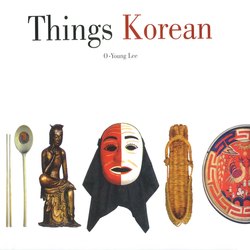Читать книгу Things Korean - O-Young Lee - Страница 11
ОглавлениеA Hat of Principle
Kat
That which best manifests the nature of a building is its roof. Likewise, of all the different clothes man wears, that which best expresses the character of the person wearing it is the hat.
Both the roof and the hat are at the summit. closest to the sky. and both of them serve the purpose of protecting us from sun and rain. Let us turn it around once: the roof is the building's hat. the hat is a person's roof.
One architect even theorized that a roof in any one culture closely resembles the hats worn by the people of that culture. There is no difference between the turban of the Moslem and the onion-shaped roof of his mosque. And in European culture that hat worn by Napoleon's troops recalls to us the classical triangular stone roof supported by its rows of pillars.
Anyone who sees the undulating eaves of the Korean thatch-roof house sees in them the floppy brim of the reed hat worn by our travelers in the old days. Our point may be made even more clear if we suggest a juxta-position of the reed hat and the thatch-roof house with the sombre head gear of the patrician class-the kat— and the dignified tile-roof buildings of that class.
Korea's version of Confucianism, which came to dominate our society from the end of the fourteenth century, gave the kat a feature unique among hats of the world. While it resembles a roof, it does not serve the roofs function of protecting. From a practical point of view, on the face of this earth there is nothing more impractical than the kat. This headpiece, woven in a very loose and airy warp and woof from the hairs of the horse's tail, stops neither rain nor sun nor wind nor cold. In truth, a much more attractive aspect of this wondrous hat which, for all its lack of protection, one can wear without actually wearing, is the way it shows off the head under it. The topknot and the horsehair band inside are silhouetted as clearly as the form in a lace curtain window.
This is not to say, though, that the kat is for ornament. On the kat you see neither the resplendent gems nor the brilliant colors of great wealth or high authority. This black kat. even when worn at its usual casual tilt, is the ultimate expression of moderation and restraint.
But this is not to say that the kat is anything ponderous or oppressive, like some helmet or ceremonial hat designed to maintain a Spartan or sublime frame of mind. On the contrary, the unique feature of the kat, more than anything, is in its feeling of lightness. We might say it is the lightest of all hats known to us.
The kat is used neither for practical reasons nor for ornamentation. The act of wearing the kat, and the kind one wears, expresses an idea, a spirit, and identifies the one wearing it. We have the adage, "Put on your kat and await your doom." This means that the kat bares to all the world your self, your mind and soul. Since the beginning of the Chosun Dynasty in the fourteenth century, the kat has announced the social position and the activity of the one wearing it.
In the nineteenth-century social critique, The Legend of Ho Saeng, we find an episode in which the hero tries to corner the market on the kat so that he can at least temporarily deprive the aristocrats and Confucian scholars of their mark of distinction, by which, in turn, he hoped to excise the problems inherent in the strict formalism of Confucianism. With this episode the author seemingly denounced not only Confucianism but the kat along with it. Rather than this being any insult to the kat, though, he inadvertently highlighted the kat's moral power.
The kat's message is manifest in the firm and straight consistency of the hair of the horse's tail. It is soft, not hard like steel. The kat's silken black sheen nevertheless manifests the strict integrity it attests to. The.material is itself the embodiment of the Korean spirit.
